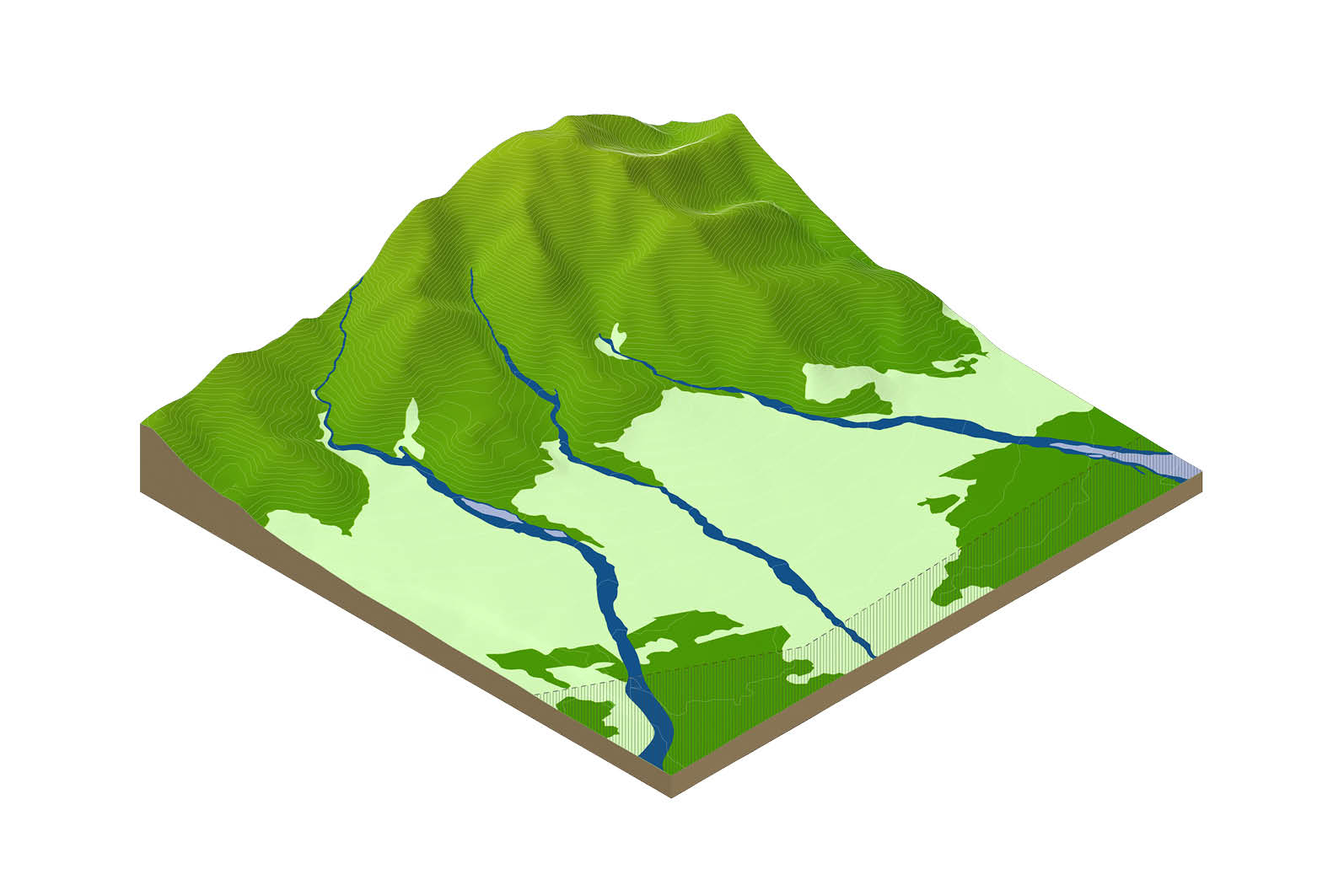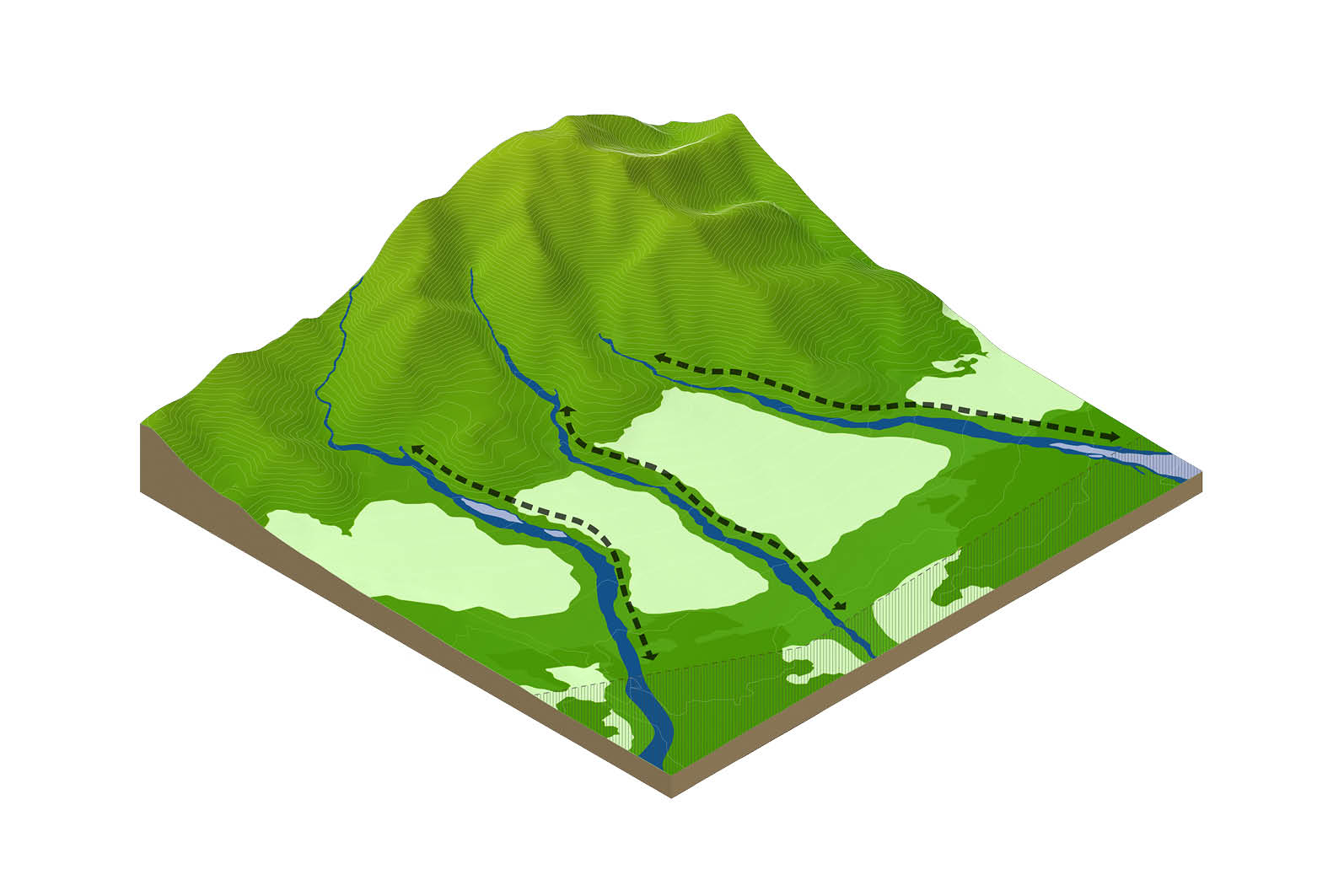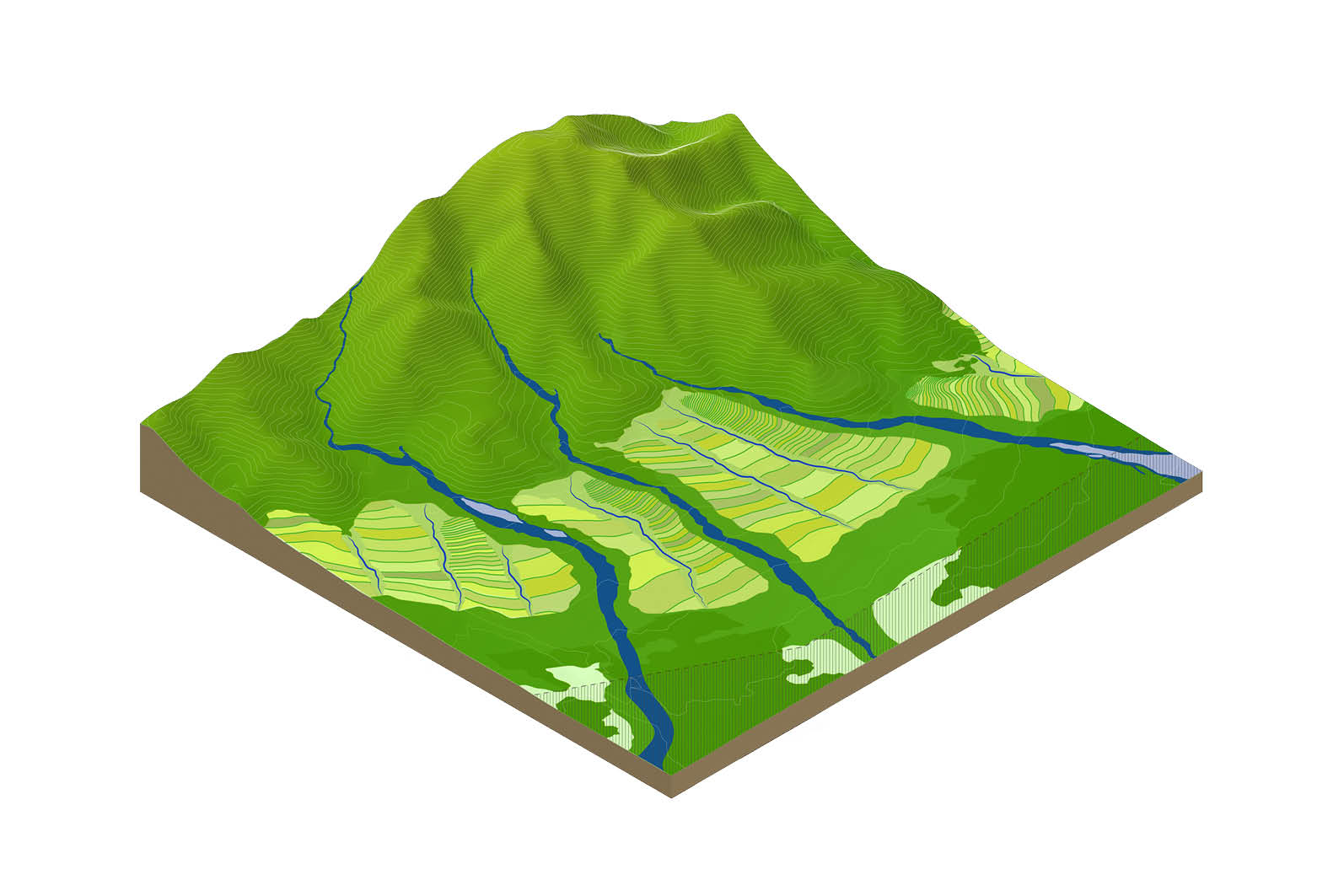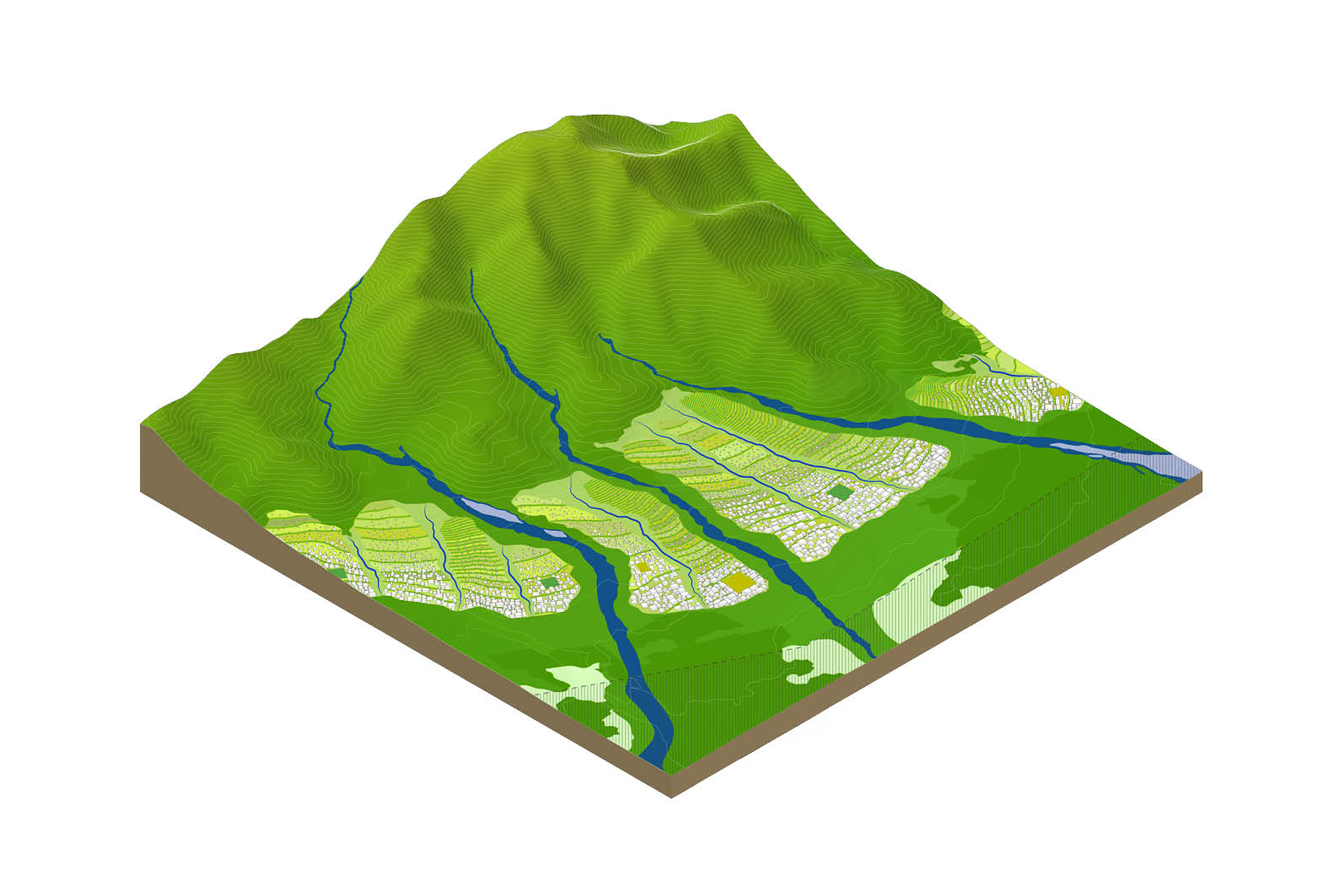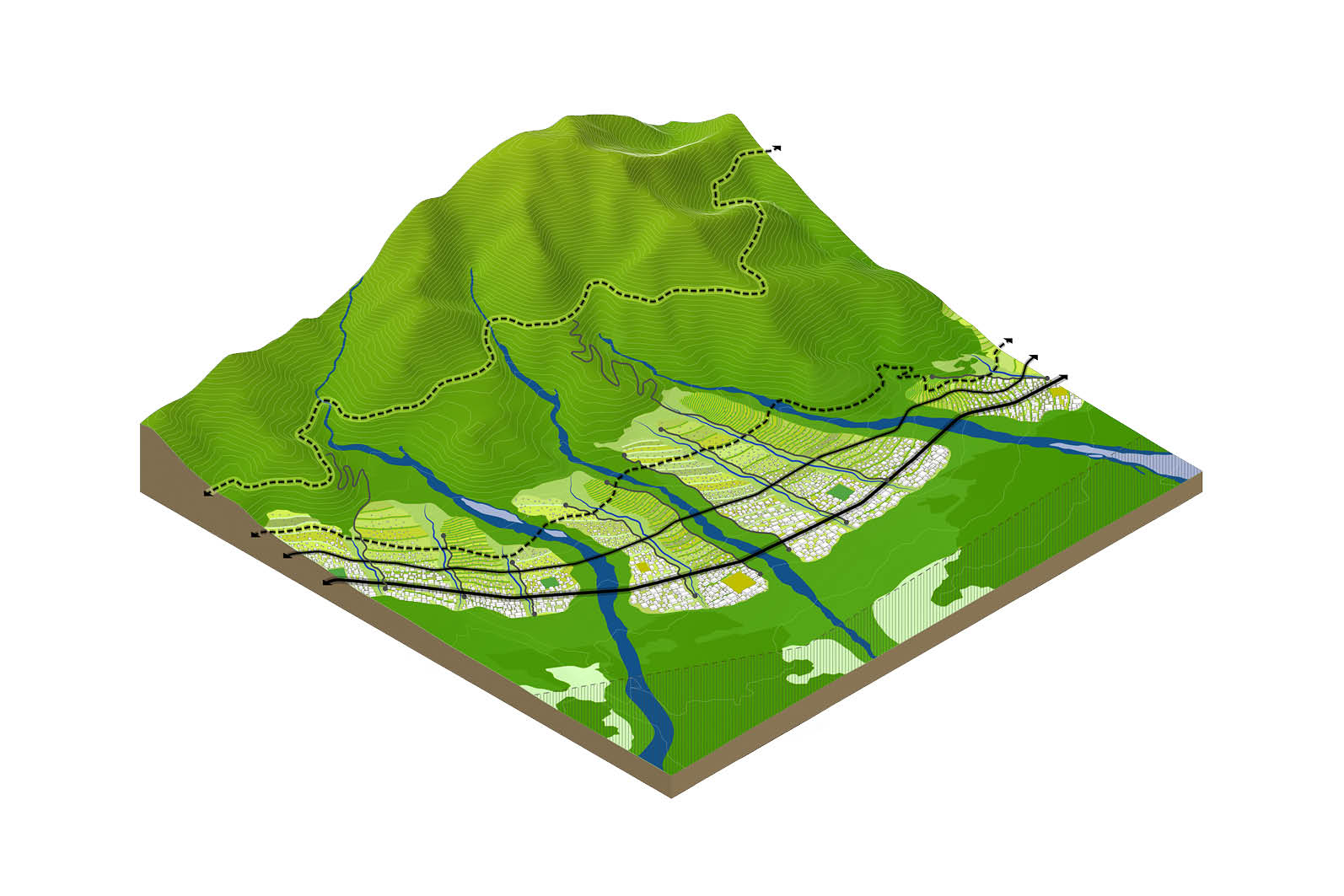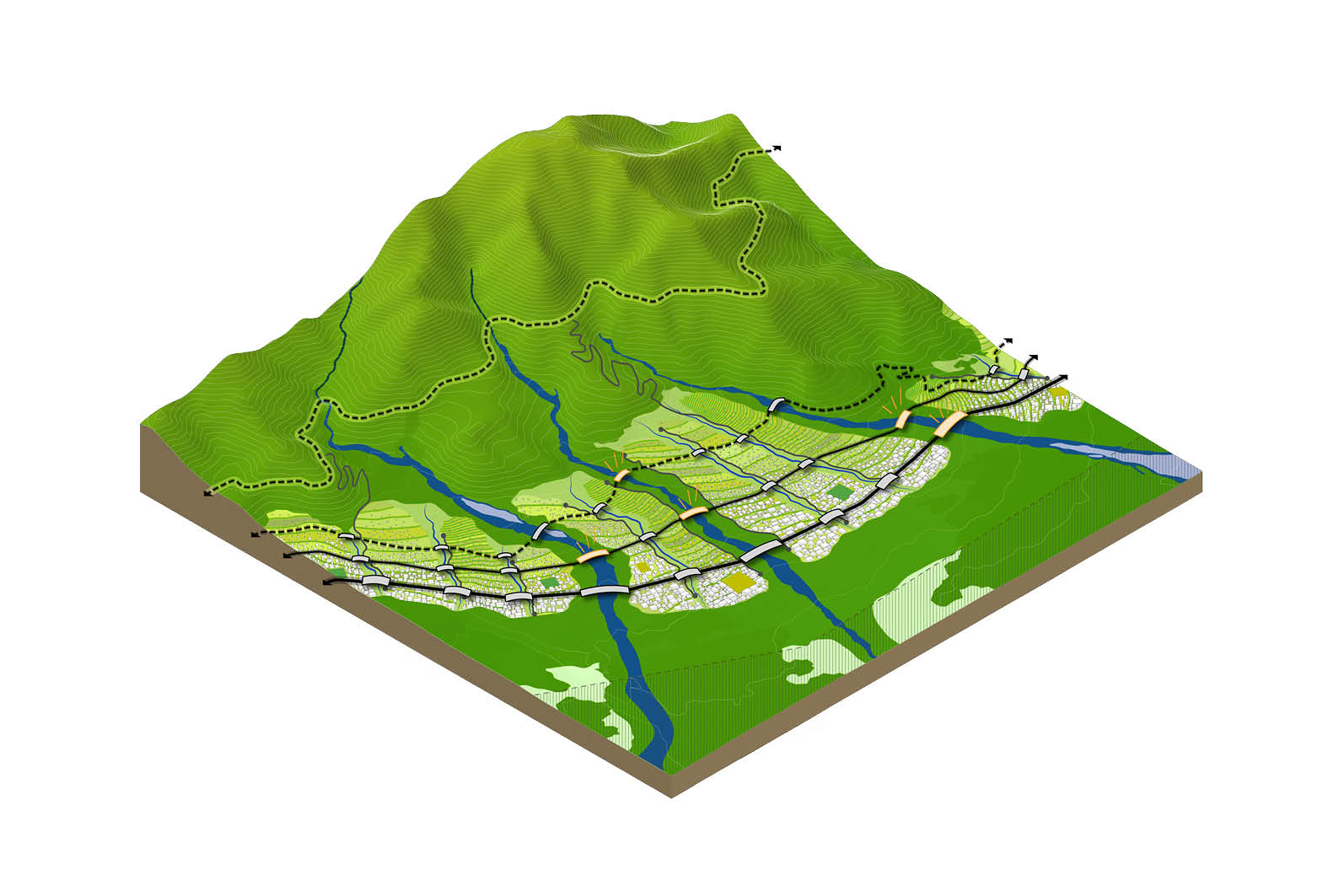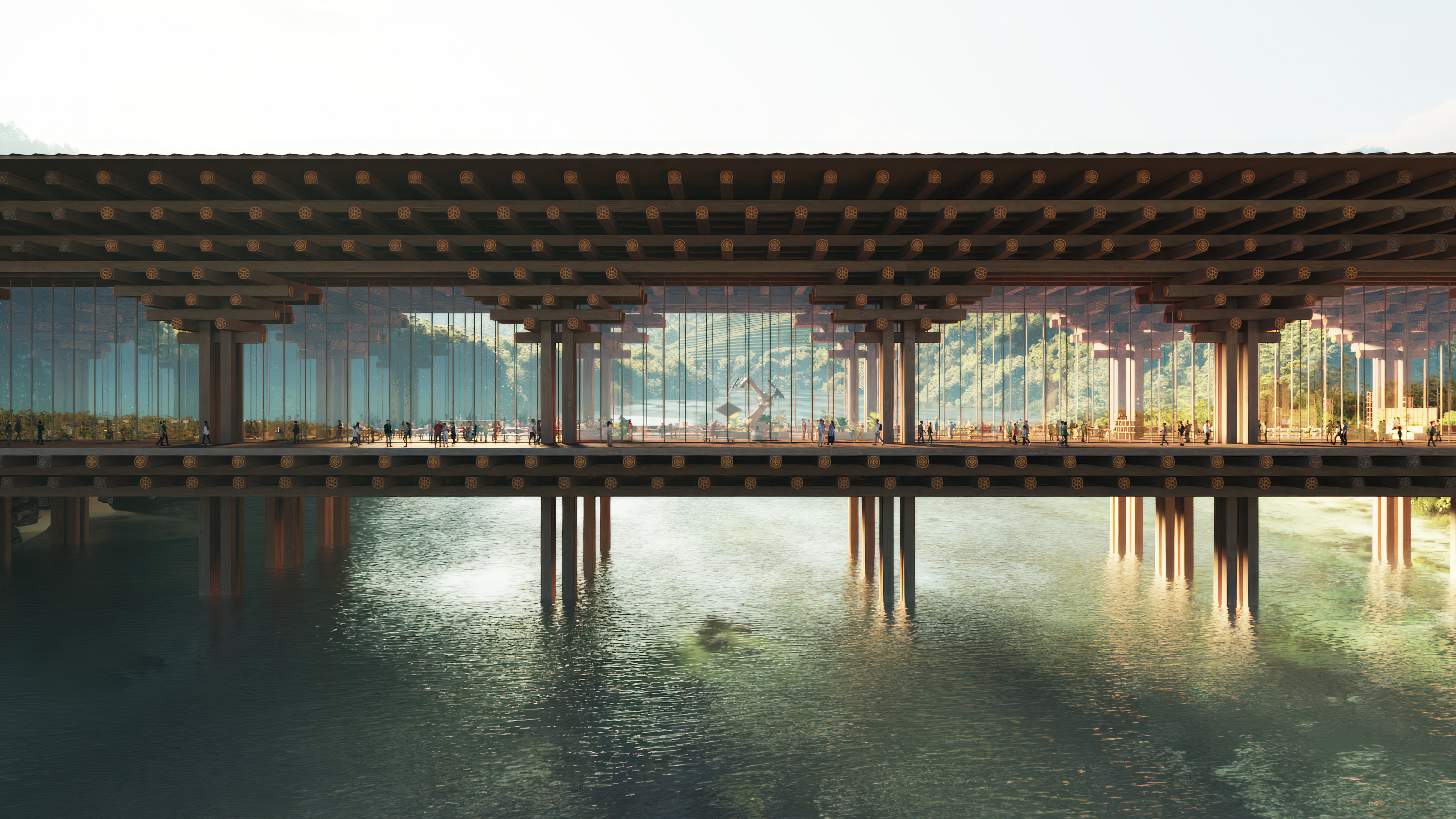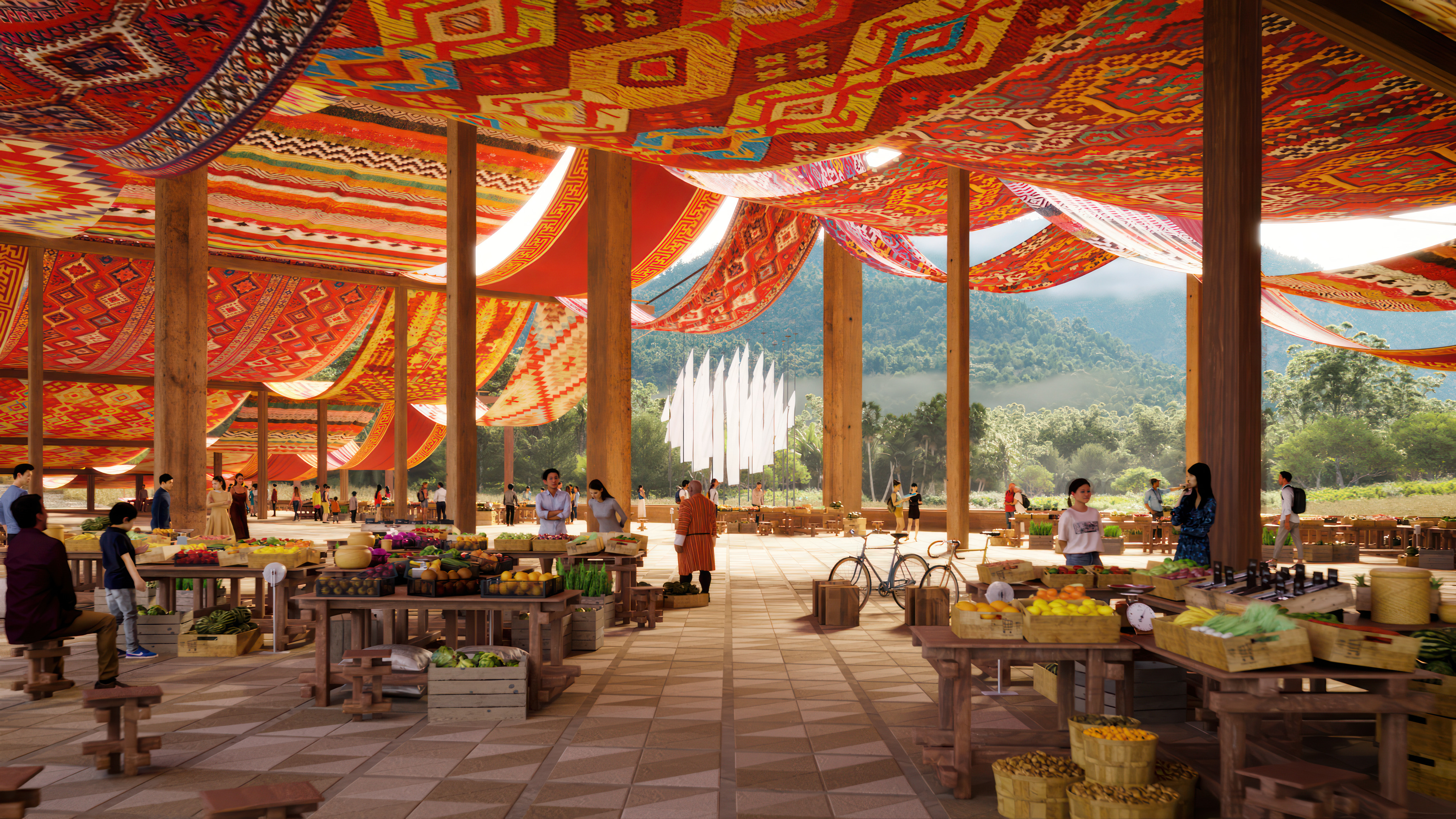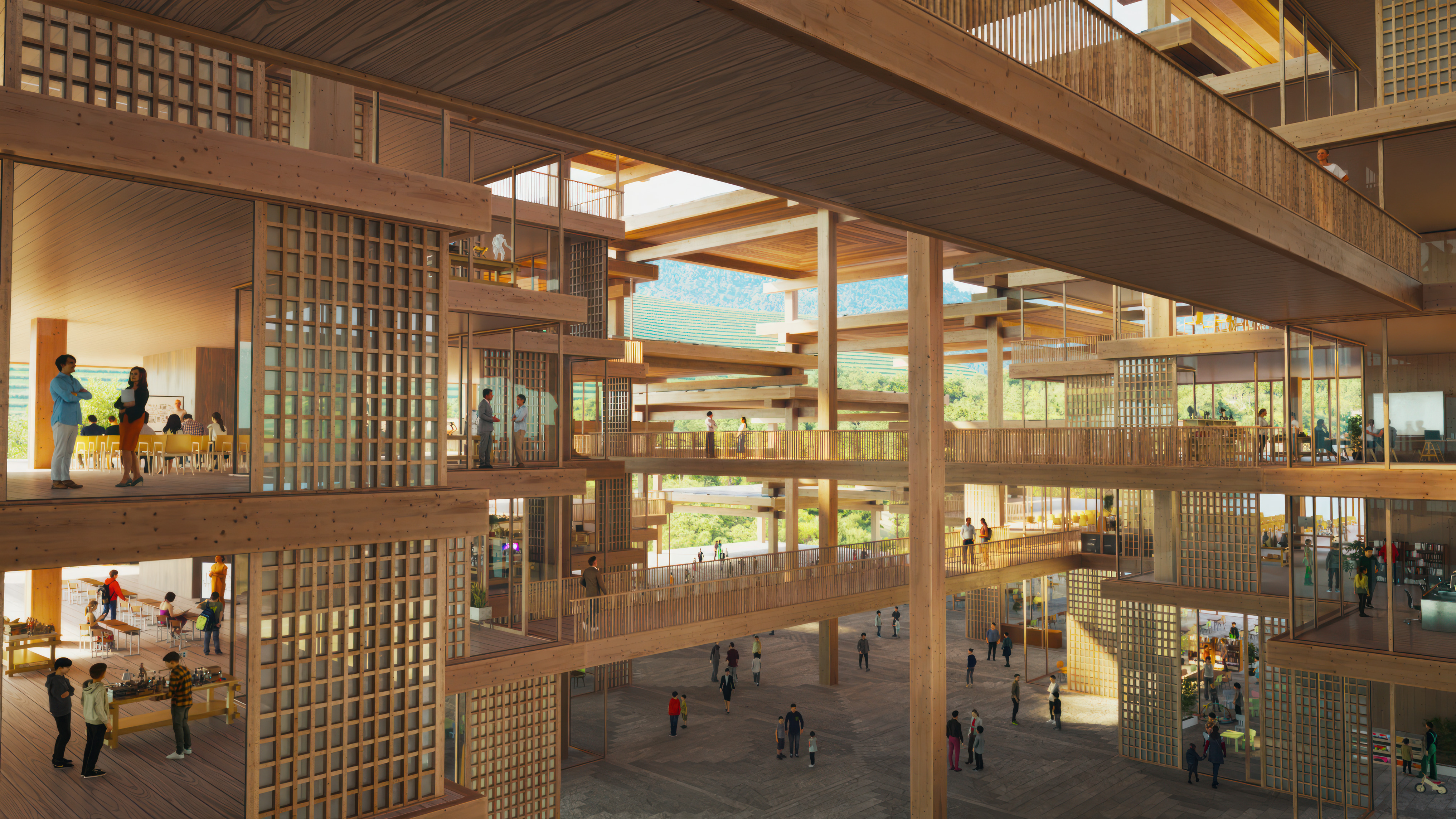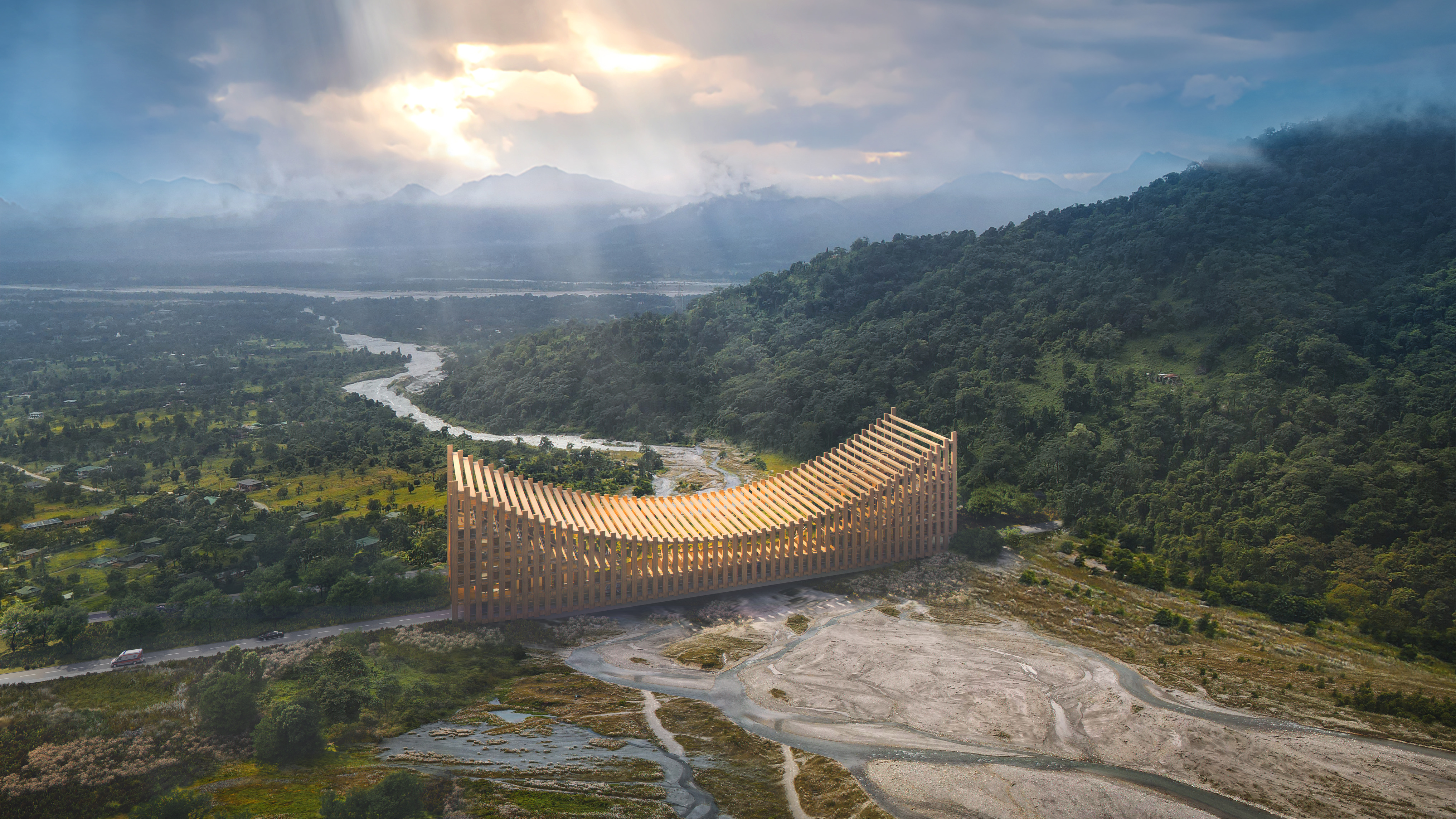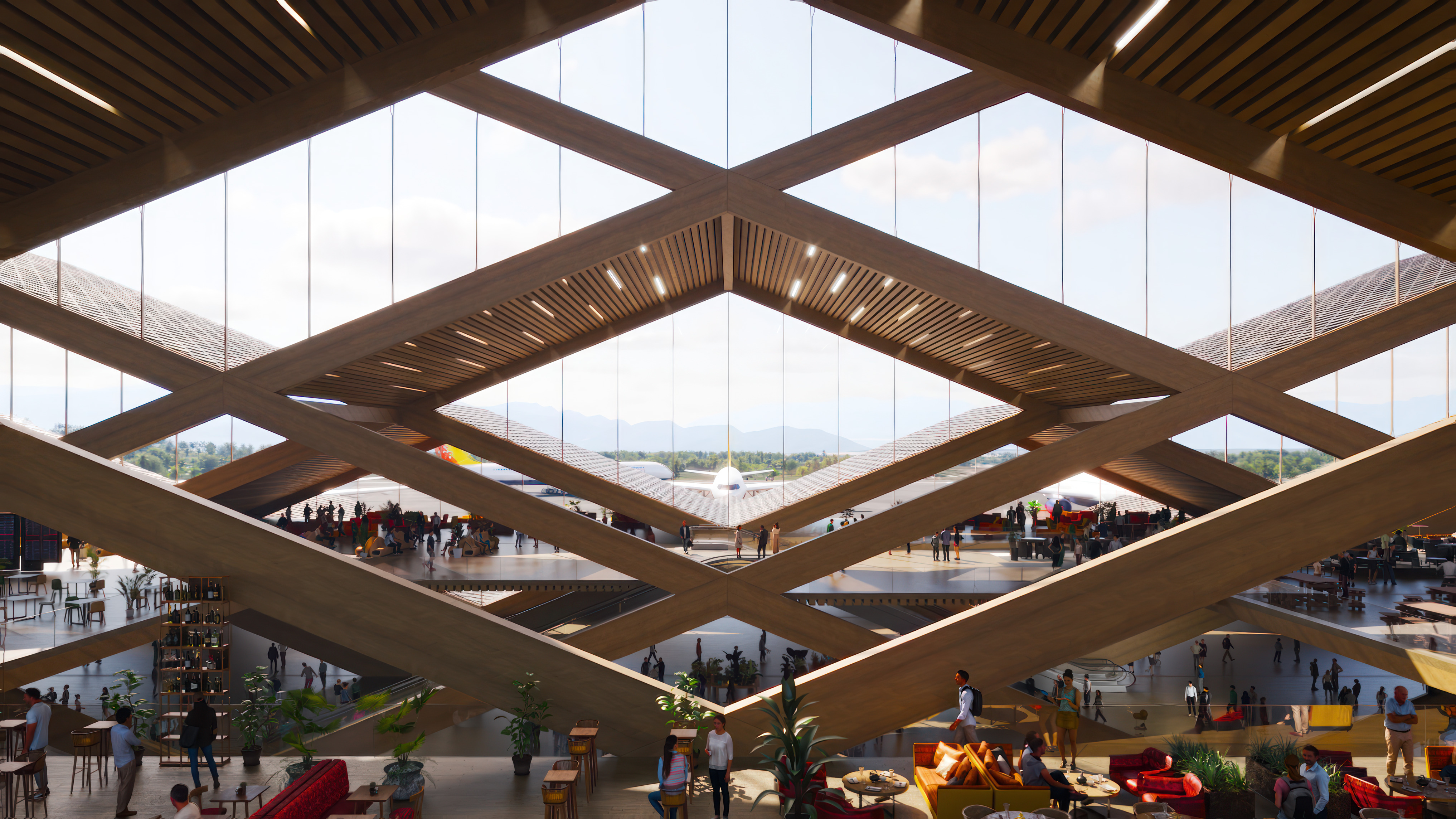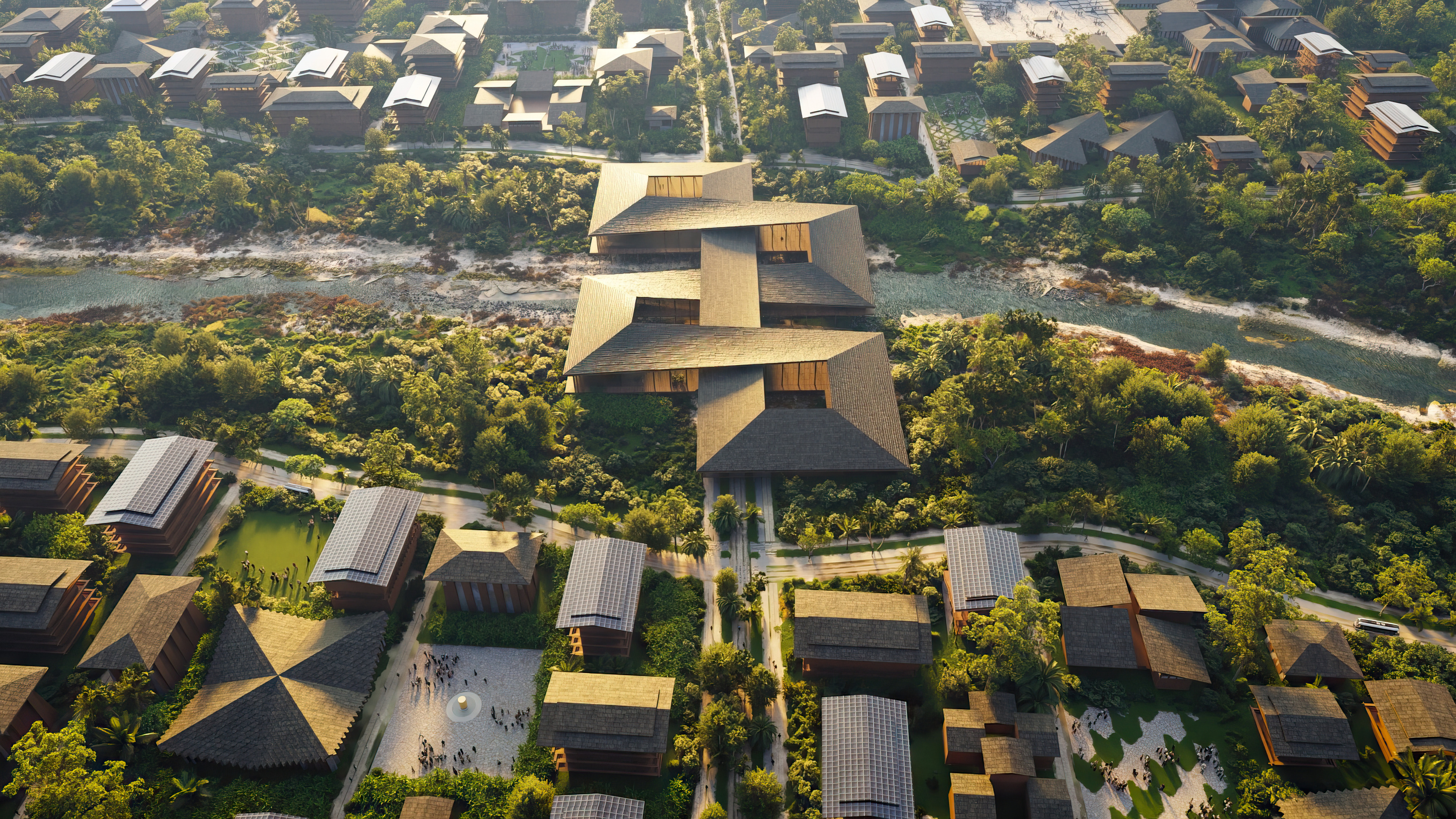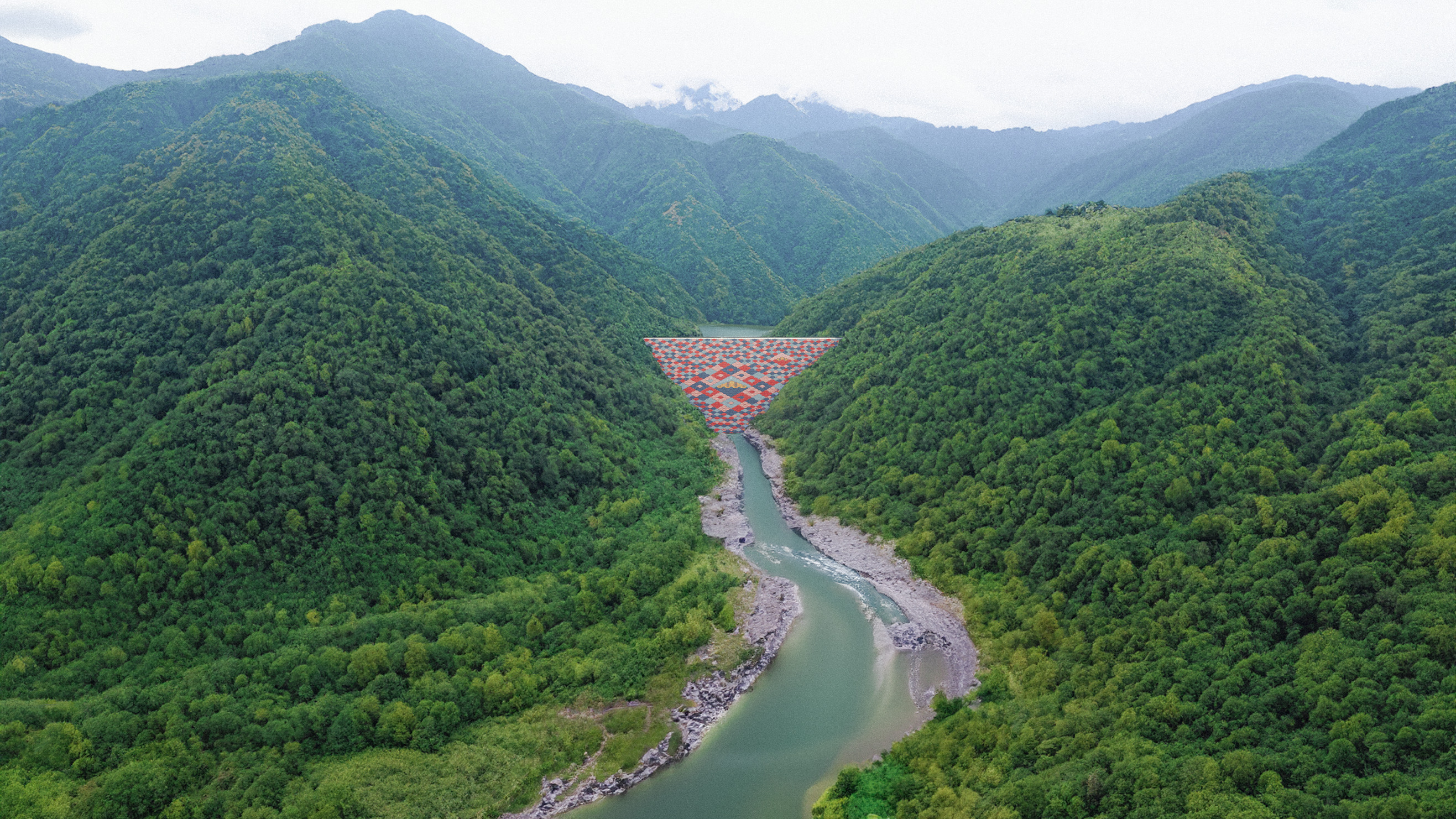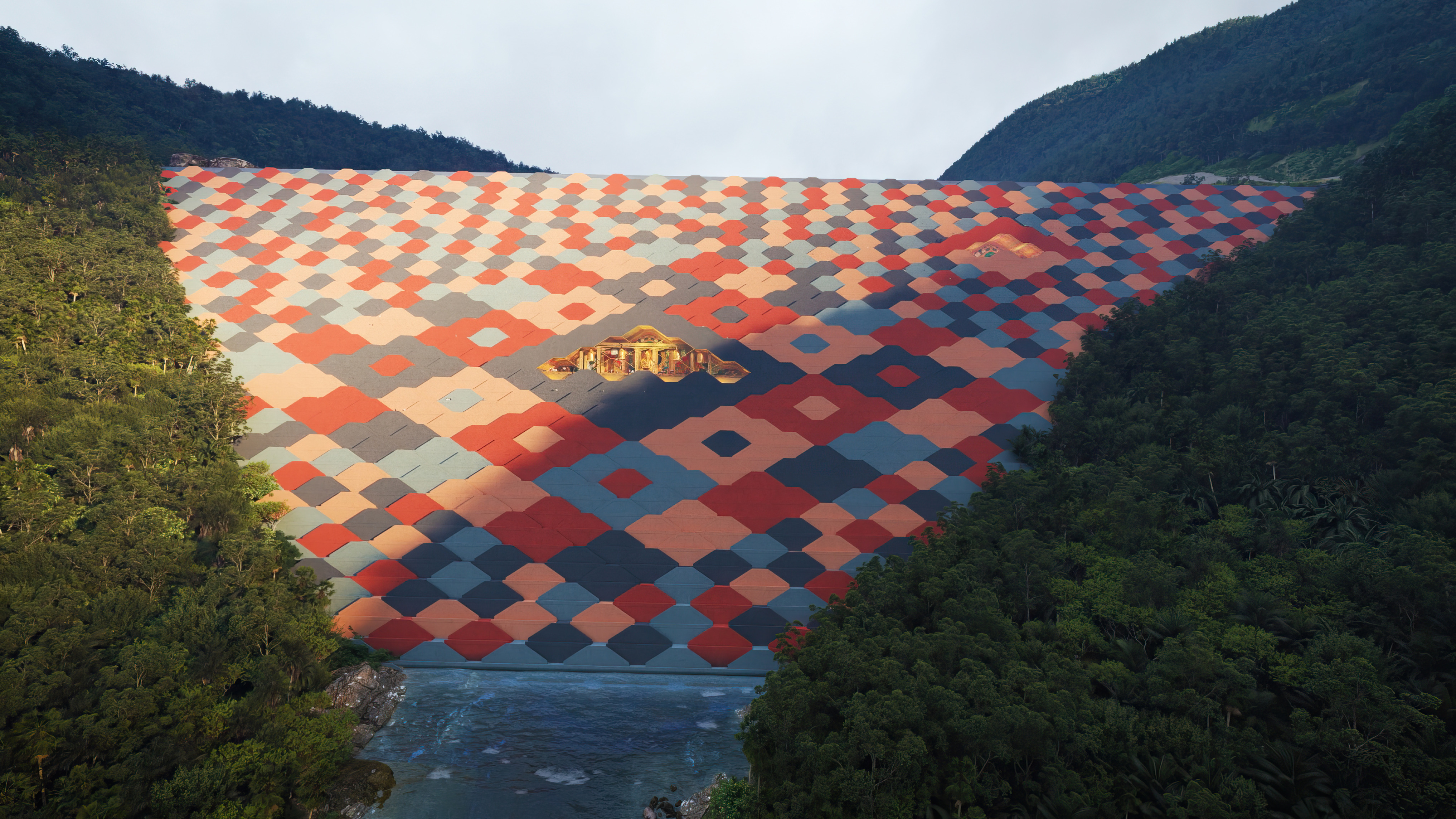STATUS
IN DESIGN
GELEPHU, BHUTAN
CLIENT
The Kingdom of Bhutan
TYPOLOGY
Infrastructure, Public Realm, Civic, Urbanism, Sustainability
STATUS
IN DESIGN
SHARE
In the 116th National Day address to the Bhutanese people on December 17th, 2023, His Majesty King Jigme Khesar Namgyel Wangchuck unveiled his vision for a new economic hub in Bhutan, the world’s first carbon-negative country. Located in the town of Gelephu in Southern Bhutan, the 1000+ km2 masterplan titled ‘Mindfulness City’ by BIG, Arup, and Cistri is informed by Bhutanese culture, the principles of Gross National Happiness index (GNH), and the country’s strong spiritual heritage.
Located on the Indo-Bhutan border to the south of Bhutan, Mindfulness City will leverage its location and connectivity to South Asia and Southeast Asia to lay the foundation for the country’s future growth and create economic opportunities for its citizens through investments in green technology, education, and infrastructure. The masterplan includes a new international airport, railway connections, a hydroelectric dam, public spaces, and a language for local building typologies, based on the nine domains of GNH: Psychological Wellbeing, Health, Education, Living Standards, Time-Use, Ecological Diversity and Resilience, Good Governance, Cultural Diversity and Resilience, and Community Vitality.
Nestled between mountains, forests, and rivers, Bhutan stands as one of the last biodiversity hotspots in the world, with 70% of the country covered in forest. Mindfulness City aims to amplify the country’s abundant biodiversity by emerging as a vibrant tapestry of interconnected ecosystems and lively neighborhoods shaped by the flow of the 35 rivers and streams that run through the site. The resulting ribbonlike neighborhoods resemble paddy fields, forming urban terraces that cascade down from the hills to the valley. The city increases in density from the rural and recreational highlands to the urban and dense lowlands.
The natural elements and the existing infrastructure, agriculture, and utilities of Gelephu naturally create 11 distinct neighborhoods across the 1000 km2 area. Each of the 11 neighborhoods is designed based on the principles of the Mandala; defined by a series of repeating typologies organized symmetrically around a central public space, a gradual transition in density is created, from small buildings dispersed in the landscape in the north to larger footprints within an urban environment in the south.
To protect existing and future development against flooding in the monsoon season, paddy fields will be established along the site’s rivers and tributaries, running from north to south. By allowing the river to naturally expand its space, minimizing the reliance on engineered flood control solutions. The rivers will further function as biodiversity corridors for local flora and fauna, leaving the migratory routes of elephants and other wildlife undisturbed.
“The Gelephu Masterplan gives form to His Majesty’s vision to create a city that becomes a cradle for growth and innovation while remaining founded on Bhutanese nature and culture. We imagine the Mindfulness City as a place that could be nowhere else. Where nature is enhanced, agriculture is integrated, and tradition is living and breathing, not only preserved but also evolved. Shaped by waterways, Gelephu becomes a land of bridges, connecting nature and people, past and future, local and global. Like the traditional Dzongs, these inhabitable bridges turn into cultural landmarks, doubling as transportation infrastructure combined with civic facilities. Among these, the Sankosh Temple-Dam embeds the city’s fundamental values into a cascading landscape of steps and landings, that like a 21st century Tigers Nest will be a manmade monument to the divine possibility of a sustainable human presence on earth. Turning engineering into art and turning the forces of nature into power."
Intimate streets, paved with permeable pavers, provide resilience by allowing stormwater seep into the ground rather than the sewage system. Local materials including wood, stone, and bamboo will be used in the new buildings, inspired by vernacular motifs such as rabsel, cornices, ornaments, and roofscapes. Building heights are limited to a maximum of six floors, reducing the need for structural concrete or steel.
The neighborhoods within the city, divided by rivers, are tied together by three main mobility connections, which occasionally double as transportation infrastructure combined with civic and cultural facilities, creating a series of ‘inhabitable bridges’ that are tailored to each of the nine Gross National Happiness domains.
Each of the bridges house key destinations within the city: the new airport; a Vajrayana spiritual centre, which allows glimpses into the daily practices of the monks and masters of mindfulness; a healthcare centre as a meeting between Eastern and Western medicine; a university that exposes its academic activities; a hydroponic and aquaponic greenhouse putting ancient farming practices and modern agro-science on display for the daily commuters; a cultural centre to immerse and educate visitors about Bhutanese culture and customs; and a market adorned with Bhutanese textiles.
“Inspired by the Bhutanese culture of respect and compassion for others and nature, the Mindfulness City is designed to enhance ecological systems, through an urban development that connects flora and fauna, as well as people and ideas. It becomes a testament of humanity's inseparable bond with nature, and a global example of how to build a sustainable human presence on Earth.”
The final bridge, a hydroelectric dam, will be constructed on the city’s western border with a step-well retaining wall that offers viewpoints, staircases for meditative walks, and a temple. Visitors and pilgrims can ascend and descend along countless individual routes to the visitor centre and temple nested on the face of the manmade cliff. The Sankosh Temple-Dam embodies in architectural form of all the foundational elements of Gelephu: the harmonious coexistence of culture and nature, conceived as a hybrid child of Bhutan’s rich past heritage and its prosperous future legacy.
Bjarke Ingels Ole Elkjær-Larsen Jakob Henke Marius Tromholt-Richter Andrea Hektor Filip Radu Frederik Lyng Graham Forrest Jordan Laura Wätte Mantas Povilaika Matthew Oravec Miles Treacy Monika Dauksaite Nanna Gyldholm Møller Per Bo Madsen Giulia Frittoli Filippo Cartapani Alessandro Sciolari Johannes Alexander Hackl Dace Gurecka Anastasiia Golub Xu Lian Job Schobre Will Chuanrui Yu Cristina Minguela Konstantinos Koutsoupakis Thomas Lejeune Sophie Høg Floris Dreesmann Atibadi Brugnano Mónica Galiana Rodriquez Jens Max Jensen Xian Chen Giancarlo Albarello Herrera Ahmad Tahhan Iván Ares Igrexas Fernando Villalobos Lopez Krisha Arunkumar Camille Castillo Stine Daude Adrianna Szmidt Praveen Lalitha Kishorekumar Xinyu Zhao Kai Siyu Tian Matthew Goodwill Anna Sofie Kirstine Krøyer Julius Victor-Antoine Delorme Elisabeth von Korff Neele Maree Ohlrogge Sophie Andrews Tara Ghesmatiaghkand Lucia Ayala Aanchal Ashok Tejwani Hancong Ding Chiara Gargiulo Claudia Jaegerman Teresa Malchiodi Albedi Parastoo Salehi Farhadpour Riccardo Abagnale Mengran Zhang Stefan Victor Delvoye Konstantin Miroshnychenko Gaspard Del Marmol Giuseppe Mercuri Jian Long Margaux Caboche Clara Mendiguren Selinay Kunter Kateřina Krchňáková
Holcim Foundation Award for Sustainable Construction, 2025
MQDC
NACO
Cistri
Arup
CDR
ERM
